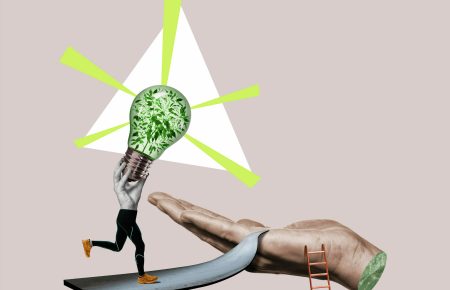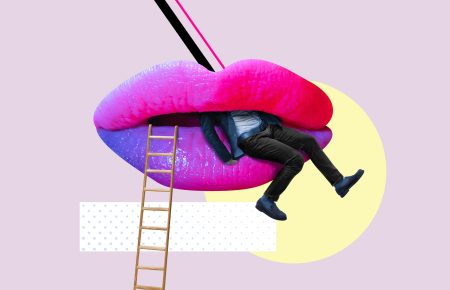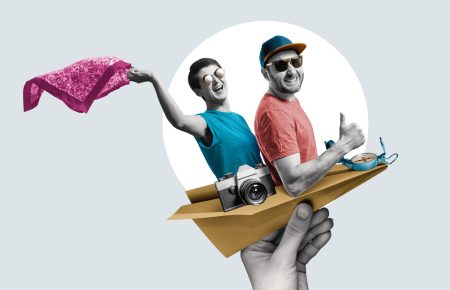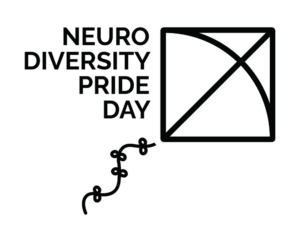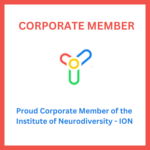Mental diversity, neurodivergence, neurodiversity—there are many umbrella terms for people who are somehow “different.”
Since I can actively remember, I’ve always felt “different.” As a child, I would meticulously arrange my stuffed animals in a particular order and tell my parents how they should be placed in the coffin in case of my death. I was three years old at the time. At the age of five, I had my first psychotherapy session. Later on, came depression, obsessive-compulsive disorder, atypical anorexia, Generalized Anxiety Disorder (GAD), panic attacks, chronic pain, and tinnitus… There’s now a term for this “otherness”: I am neurodiverse.
Neuro-what? A brief history of the term
The term is still relatively new in the German-speaking world and is sometimes used inconsistently. Synonyms like “neurodivergence” or “mental diversity” are also used. Personally, I prefer “neurodiverse” for myself, and I’m not alone. “Neurodiverse” and “neurodiversity” are particularly common in the German language, and this is likely to persist in the medium to long term. This insight is based on the analysis of 40 scientific articles on the subject, a general Google search, ten expert interviews, communication in my LinkedIn group “Neurodiverse Women*,” and work on my book project “Neurodiversity – The Neurohidden Champions.”
For psychologist André Frank Zimpel, neurodiversity refers to the diversity of human nervous systems, among which, like snowflakes, “never are two completely identical specimens.” Each person processes information and impressions in their own way. There is no “right” or “normal” way to experience the world and deal with it. People with neurological differences such as ADHD or autism should not be seen as different but as part of diversity.
Other people are considered “neurotypical.” Originally, this term was used exclusively for people who are not explicitly autistic. Today, the meaning has expanded: Neurotypical people thus correspond to the neurological and medical norm and do not exhibit defined neurological differences. However, there is actually no one who can truly be described as neurotypical—because there is simply no established norm for the human brain.
While many discussions about neurodiversity revolve mainly around ADHD and autism, there are also more holistic approaches that describe a variety of phenomena falling under the umbrella term “neurodiversity”: Neurodiverse people who stand out from the majority have special cognitive characteristics—sometimes only in certain stages of life, and not necessarily pathological or medically diagnosed.
Examples of conditions encompassed under neurodiversity include:
- ADHD (Attention Deficit/Hyperactivity Disorder)
- Anxiety disorders
- Aphantasia (people without visual imagination)
- Autism
- Bipolar
- Borderline Personality Disorder
- Chronic illnesses, like chronic pain, and specific diseases (such as endometriosis)
- Depression
- Dyscalculia (difficulty in learning or comprehending arithmetic)
- Dyslexia (difficulty in reading)
- Dyspraxia (coordination and developmental disorder)
- High sensitivity (including reactions to chemicals or electromagnetic fields)
- Learning and developmental disorders
- Reading and spelling disorders
- Synesthesia
- Tourette’s Syndrome & Tics
- Trauma and social exclusion
- Obsessive-compulsive disorders
(Source: Simone Burel: Neurodiversity – The Neurohidden Champions (unpublished manual)
Why is neurodiversity important?
Neurodiversity means normalizing differences in people’s mental states and not dividing them into “mentally ill” and “mentally healthy.” It’s a matter of attitude whether differences in mental state are seen as a “disorder” or just as a specific organization of the thought system.
Instead of emphasizing deficits, we should recognize and promote the strengths of neurodiverse people. These individual abilities can be of great benefit to companies—neurodiverse people are indeed brilliant employees! They have their own ways of thinking and perspectives on things, and process information differently. This enables them to specialize in certain fields or bring innovative ideas. For example, highly sensitive individuals often notice details or team moods that others miss.
Neurodiversity in the Workplace – Clarity and Boundaries
Today’s working world particularly seeks neurotypical people with a focus on extroverted individuals who are “loud” and exhibit qualities such as “assertiveness” and “openness.” This is a problem for many neurodiverse individuals, including introverts, whose contributions and ideas receive less recognition. However, they often listen better, make decisions based on more information, and promote cooperation rather than “survival of the loudest.” When company culture is solely geared towards neurotypicals, important ideas and perspectives are lost. There is a need for more diverse offerings for different personality types so that everyone’s work is visible and can be evaluated based on its content rather than its volume. Everyone benefits from this, as mixed teams can work more effectively and productively due to higher collective intelligence.
But how can the office be optimally designed to enable productive work? There are many adjustments that can be made to adequately design office spaces—not just for neurodiverse employees. Some important considerations include:
- Ergonomic workspace design: adjustable desks, workstations, or even fancy office desks with treadmills (also useful for home offices, which are particularly important safe spaces for all neurodiverse individuals)
- Dimmable lighting: adjustable light sources and access to natural light, work with privacy screens or plants between desks
- Pleasant acoustics: offices with reduced noise levels (with access to noise-canceling headphones or sound oases—my tinnitus loves chirping crickets!)
- Clear movement guidance system: such as color-coded marking of main exits or clear signs in buildings, reducing stress and cognitive processing effort
- Good air quality: through air filtration systems, which not only promote oxygen intake in the brain but also support allergies (Caution: use room fragrances sparingly and test them if necessary)
- Room layout and zoning: designated quiet zones (sound oases, massage chairs, or lying areas) or shielded safe spaces for making phone calls alternate with community areas or creative zones for exchanging ideas. (Zoning in the workplace refers to the division of a workspace into different zones or areas to allow separate control of temperature, lighting, or other environmental conditions)
(Source: Neurodiversity in the office. How to Create Neuroinclusive Workspaces?)
These ergonomic-sensory adjustments are one aspect. Additionally, flexible working arrangements are needed—core elements of productivity for many neurodiverse individuals. Some work better at certain times of the day, while others need more breaks in their daily routine. This could even include a silent lunch break, which is why large companies like BASF have already introduced silent tables or silent zones in the Zen tradition in their cafeterias.
Neurodiversity and Recruiting – a good match!
HR departments can also actively contribute to the inclusion of neurodiversity in the company: They can raise awareness and promote mutual understanding among employees and managers through training and workshops on neurodiversity.
In recruiting and onboarding, talents with neurodiverse characteristics can be specifically addressed by HR departments by rephrasing job postings and offering different selection procedures. But the traditional job interview might not be suitable for everyone. Why not opting for a self-made video presentation which offers a dynamic alternative to traditional interviews or video calls? Detail-oriented thinking, out-of-the-box creativity, and resilience are competencies that neurodiverse individuals bring and which sometimes go unnoticed. Recognizing patterns or debugging (fixing errors), which are valued in the IT field for people on the autism spectrum, can also be helpful in other areas. For example, in proofreading or examining DNA sequences. It is always important to consider the individual resumes and experiences of the applicants: People first! People are unique, just like their needs, self-perception, and also their view of neurodiversity. Leaders often reach their limits with traditional leadership styles. Stereotypes surrounding neurodiversity persist and hinder personnel decisions. The result is homogeneous neurotypical groups and a lack of advancement opportunities for clever minds.
Currently, neurodiversity is increasingly recognized in the HR world as an economic factor. It remains to be seen whether HR managers and leaders are ready to venture off the beaten path and evolve neurointegratively—up to the point of leadership.


